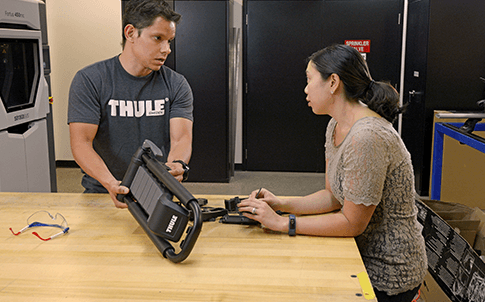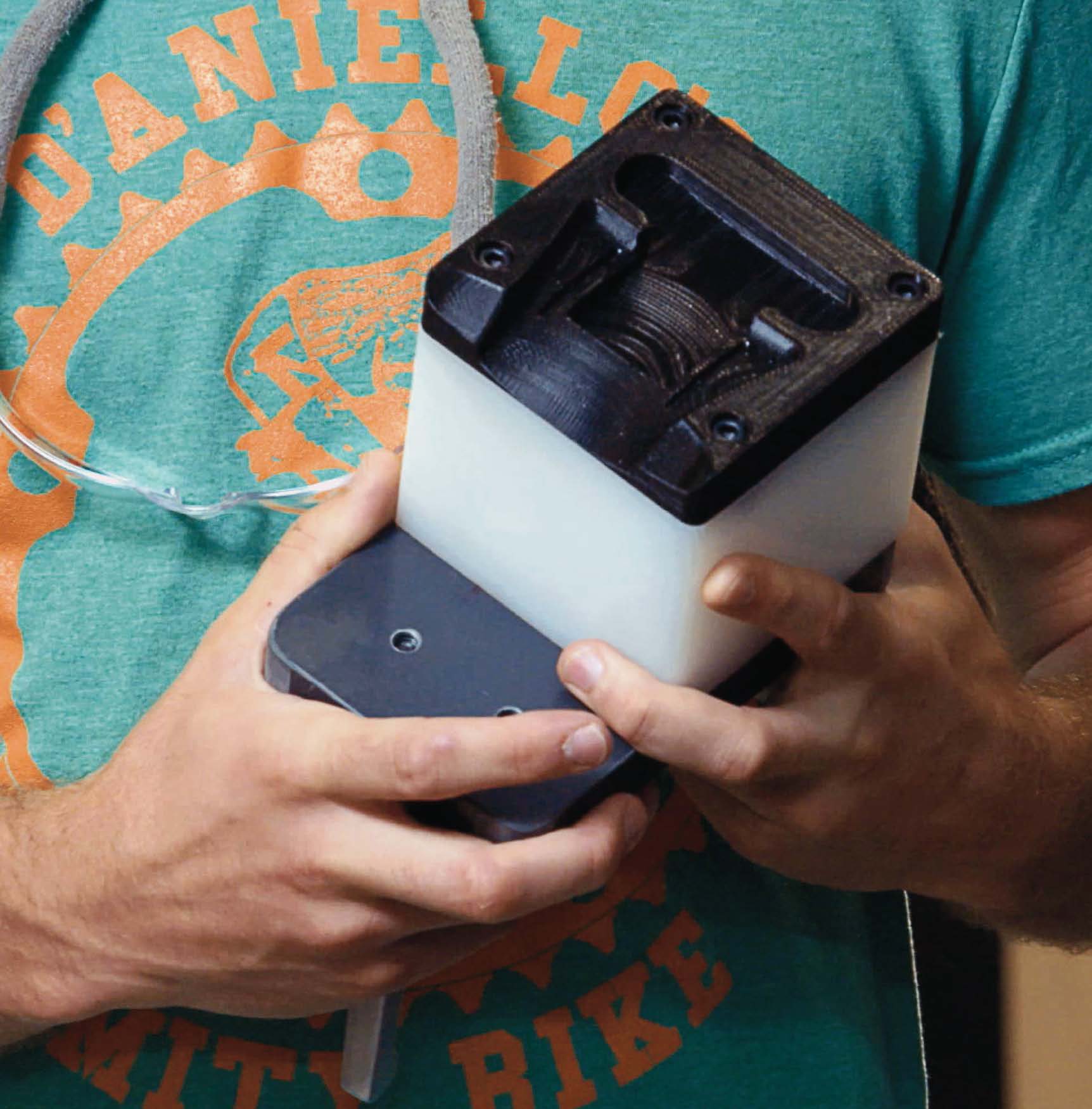SPIRIT OF ADVENTURE DRIVES PRODUCT DESIGN
Thule is a common word used amongst active people. As a global leader in solutions, which allow people to “bring with them what they care for most,” Thule brand name adorns products from car racks and carriers, to luggage and bags – even kids accessories. Thule Group’s American corporate headquarters and U.S manufacturing facility located in Seymour, Connecticut, product design and innovation are significant for this active lifestyle’s company.
Thule’s spirit of innovation attracted them to early 3D printing to help with concept validation using visual models. Although despite the conceptual benefits, these models lacked the functionality that is required for design verification. Thule made a decision to upgrade for greater material range and higher output. This gives the company the ability to print functional prototypes.
“It wasn’t just additional 3D printing capability, but suddenly, we were able to conduct functional tests with prototyped parts.” Rob Humphries, Thule
“Bring Your Life,” is a slogan used by the engineers and designers at the company, who were also fully on board after seeing what 3D printing has the capability to accomplish. “Our (3D printer) was at capacity, running for 16 to 20 hours a day,” said Rob Humphries, prototype engineer, product development at Thule. “Besides that, our product development team grew here in Connecticut, and we started supporting other Thule manufacturing and design locations as well.” However, there is one issue which remains for Thule, and that is, finding the ability to print prototypes with the stiffness and strength of fiber, or glass-reinforced injection molded parts which would enable the company to perform functional performance testing.


From Concept Validation to Functional Testing
Not long after Thule purchased their 3D printer, they learned about carbon fiber-reinforced nylon material. “With the Nylon 12 Carbon Fiber, we very quickly had a double argument for this new machine,” said Humphries. “It wasn’t just additional 3D printing capability, but suddenly we were able to conduct functional tests with prototyped parts. It’s been a big advantage that materialized because of this new machine and material.”
Yet another feature of this material is that it has the potential to withstand Thule’s notorious and rigorous functional testing. “Our testing is brutal,” said Humphries. “I don’t think everyone was aware of the possibility of being able to 3D print parts with this level of strength until they began seeing the capabilities of Nylon 12CF.” Demand for time on Thule’s carbon-fiber printer, a Stratasys Fortus 450mc™, shot up once engineers saw the strength and stiffness capabilities of the carbon fiber material. “When people started to see the CF parts passing our more severe tests, engineers started saying ‘oh, I really want my parts made with this material.’”
Nylon 12CF has performed so greatly for the company that Thule has begin printing assembly fixtures and manufacturing aids for their Connecticut manufacturing plant, as well. “Nylon 12CF has been game-changing for us,” said Humphries. “Nothing that we could get affordably or quickly has the properties that Nylon 12CF does. It lets us more accurately model our production parts, test faster, and get to market faster.”

While being able to print parts capable of withstanding both static testing and drive testing, “every time we print a part in carbon fiber it takes two weeks off the time it would have taken us to send it out,” said Humphries. “It definitely helps with the creativity at Thule.” Engineers print three to four iterations within a week. It has the ability to print a new version every night and improve it next. “If we had to wait two weeks between iterations, a designer’s project schedule would be shot,” said Humphries. “The speed with which we’re able to iterate puts better ideas into design.
The demand for new product prototypes is continuously growing at Thule. “We’ve made rotating parts, like our clamp mechanism that has teeth that fit into each other that wouldn’t hold up without the capabilities of FDM Nylon 12CF. They’d break-off or bend completely over, without breaking,” said Humphries.
With less than a full year of the Fortus 450mc under its belt, the company has already printed numerous designs. “We’ve saved over $45,000 so far this year, and countless days of time,” said Humphries. To further reduce costs, engineers at Thule recently sought quotes to print massive production fixtures out-of-house. “Costs were going to be about $18 a cubic inch to print out-of-house, versus material costs of just over $4 a cubic inch. “Based on this quoted cost, our volume of printing on our two Fortus machines has already saved us enough to pay for the two printers.”
Humphries is already looking to expand Thule’s business process and foresees 3D printing playing a large part. Thankfully, Thule’s success with Nylon 12CF and the time and cost it saves, “I get to start looking at options for my next 3D printer,” Humphries said.